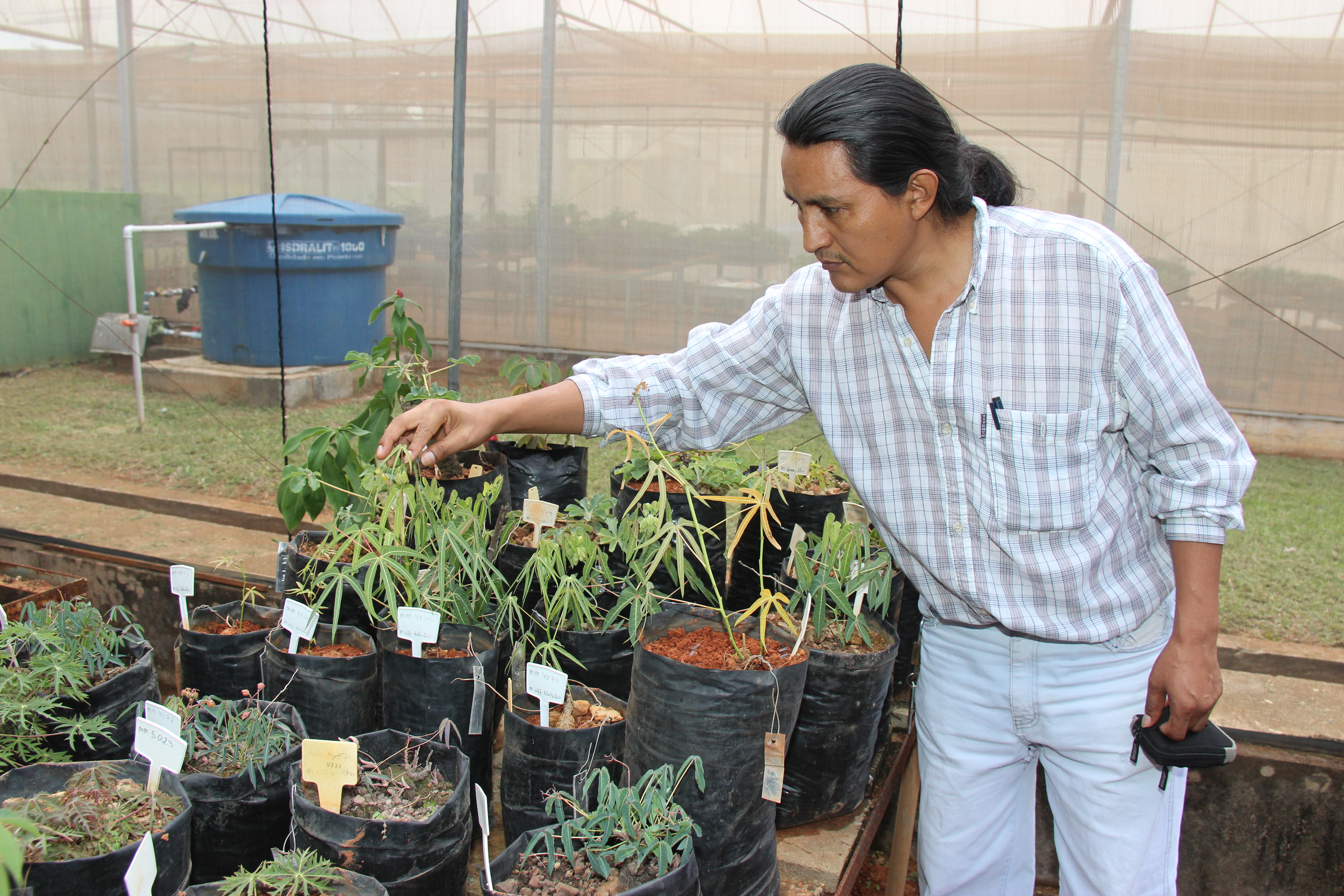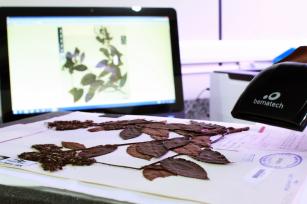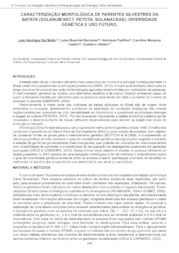Researchers identify wild cassava relatives
Researchers identify wild cassava relatives
Photo: Claudio Bezerra

Moises Mendonza identified nine (9) wild cassava species, advised by the researcher Taciana Cavalcanti
Study of wild relatives can be useful for the breeding of cultivated species
A study led by the Bolivian researcher J. Moises Mendoza F. and advised by the researcher Taciana Cavalcanti at Embrapa Genetic Resources and Biotechnology, in Brasília, DF, Brazil, resulted in the identification of nine (9) wild species of cassava, a native plant of Brazil that has an important role in the Brazilian population's diet. The so-called "wild relatives" of the cultivated species are native species that share relatively recent ancestry with cultivated plants. The importance of the discovery is due to the fact that such species represent an important potential source of valuable traits for breeding programs, such as nutritional characteristics, adaptability to extreme weather conditions, and resistance to pests and diseases.
The wild species started to be described about two years ago as part of Moises' research for his PhD in Botany from the University of Brasília (UnB), and were identified in the Midwest region of Brazil. One of them was found in the highlands region of Chapada dos Veadeiros, in the outskirts of Alto Paraíso de Goiás, GO, and named Manihot robusta. For Moises, the species is quite different from the root that the people know, but, for science, it is is considered a wild species. "The region has been shown to be an important center of diversity for the genus", asserted the researcher in a study published in 2015.
In that paper, besides robusta, two other species were described: Manihot debilis and Manihot minima. Besides those found in Chapada dos Veadeiros, three other ones described in 2015 have also originated from the villages of Cavalcanti and Uruaçú, both in the state of Goiás: Manihot erecta, Manihot glauca and Manihot inflexa.
The last three wild species were discovered in 2016, also in Goiás, in the mountain region of Serra do Tombador: Manihot ebracteata, Manihot purpurea and Manihot tombadorensis. The description was made in a paper published in September 2016. In common, the new species share the fact that the plants are quite different from the cassava known by most Brazilians.
According to the researcher, their kinship lies in the edible root. "I imagined that I was going to find new species when I arrived here, but identifying nine was beyond my expectations. I believe that there must be many other species in the central region of Brazil", the agronomist stated.
The researcher also studies the evolutionary relationship between the species
Besides performing the taxonomy of the species, which comprises the identification of traits and attribution of a name in accordance with scientifically valid norms, Moises Mendoza has also revised the existing classification, corrected specification errors and, finally, studied the evolutionary relationships between the species, i.e. phylogenetics. The whole study is being conducted in the laboratories of Embrapa Genetic Resources and Biotechnology, which has one of the most representative herbariums of Brazil with regard to the Cerrado biome, with about 108,000 exsiccatae (samples of dry plants). The observation in the herbarium complements the researcher's previous work in field analysis.
The laboratories in turn are used to develop the plants' genetic analysis with the purpose of mapping the genus to which they belong, their ancestors and descendants. According to the researcher Taciana Cavalcanti, Moises' advisor, this type of analysis used to be done only based on plant morphology, but with the advance of genetic research, today studies are directly based on DNA.
"To perform genetic code analyses, we use a computer system that calculates the relationship between the species based on molecular markers, which are genes that work as references", explains the researcher. The closer to 1, the greater the possibility of kinship and the likelihood of using the wild species in the breeding of cultivated species.
Cassava would have originated in Amazon Southwest
Cassava was described for the first time by the Austrian doctor and botanist Heinrich Crantz, who had found the species in the Amazon Southwest. Nowadays, the state of Goiás has proved to be the terrain where most species are found. The confirmation is in the List of Species of the Brazilian Flora, where out of the 87 types of Manihot described, 57 have their center of origin in the Brazilian Midwest, 50 of which from Goiás state. And it was precisely this variety of species that motivated the Bolivian agronomist to study cassava and its wild relatives in Brazil.
Despite recent discoveries, a profound lack of information on the wild relatives of cultivated plant species still prevails, and many have their survival threatened either by the destruction of their natural environments or due to the introduction of invasive exotic species. Hence the importance of researchers dedicating efforts to conserve the wild relatives of cultivated plant species, in order to make them available for current and future research programs.
According to the Food and Agriculture Organization of the United Nations (FAO), cassava is planted in over 80 countries, the largest producer of which is Nigeria, followed by Thailand and Brazil. According to FAO, in 2008 approximately 25.9 million tons of cassava were produced, 8.9 million of which in Brazil alone. Considered the third highest source of carbohydrates in the tropics, it is estimated that the species is part of the basic diet of more than half a billion people.
Translation: Mariana de Lima Medeiros
Irene Santana (MTB/DF 11354)
Embrapa Genetic Resources and Biotechnology
cenargen.nco@embrapa.br
Phone number: +55 61 3448-4769
Further information on the topic
Citizen Attention Service (SAC)
www.embrapa.br/contact-us/sac/


